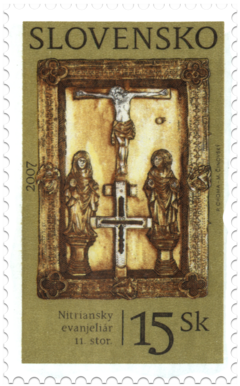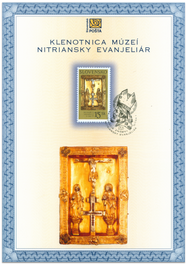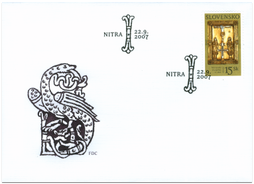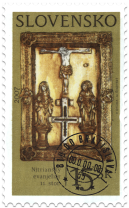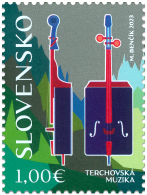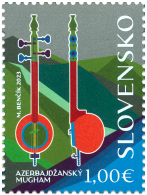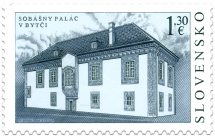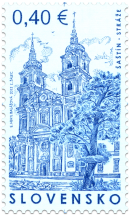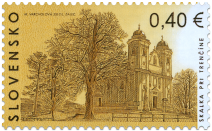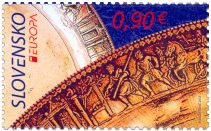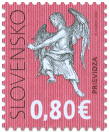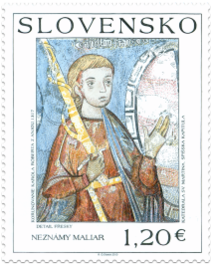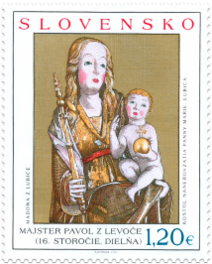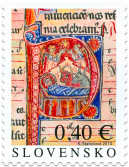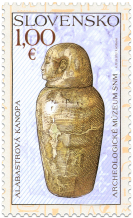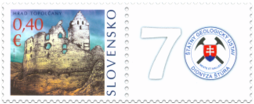This product is not for sale
This product is part of the following products
407 Date of issue
22.09.2007 Face value
15.00 Sk
© Slovak Post., 2007 Nitra's gospel-book is considered to be the oldest preserved book produced in Slovakia, dating back to pre-1083. It is a liturgical book containing extracts from gospels that were read during Sundays and the religious holidays of the church year. Of the original 54 parchment-foils measuring 285x195 mm, as many as 50 were preserved. The foils are bound and inserted into thick wooded covers, and lined in purple velvet. Deep silver and gold-plated relief was attached to the covers in the 14th to 15th centuries – as illustrated on the presented postage stamp. The relief illustrates the crucifixion of Jesus Christ with figures of Madonna and St. John standing on pedestals. The lower part of the cross continues with an empty reliquary in the form of the Patriarchal cross, which is older, probably of Byzantine origin. The relief's edge is decorated with ornamentation in the corners there are quatrefoils with enamelled and filigreed decoration. Further decoration is then presented with symbols of the evangelist Mathew (man), Mark (lion) and Lukas (bull), but the symbol of John (eagle) has not been preserved. The original artwork of the gospel-book probably derives from northern France (Lorraine). Its production in a Benedictine convent in Hronský Svätý Beňadik was dated to pre-1083 because its list is missing the saints Stephen, Imrich and Gerard who were canonized in 1083. The gospel-book is thought to have arrived in Nitra at the time of the Bishop Juraj Selepczéni (1648 to 1666) and was used during solemn occasions. According to the results of the most recent research conducted by Jaroslav Nemeš, the gospel-book is assumed to have been created in the 1130s in a Benedictine convent in Burtscheid (today a city part of Aachen, Germany). In the 14th century, the gospel book arrived – most probably purchased – at the Cistercian monastery in Piliš and then to Nitra most probably at the time of the Bishop František Forgáč (1596 to 1607). Richard Marsina
Show less© 2024 POFIS - Postal philatelic service. All rights reserved

